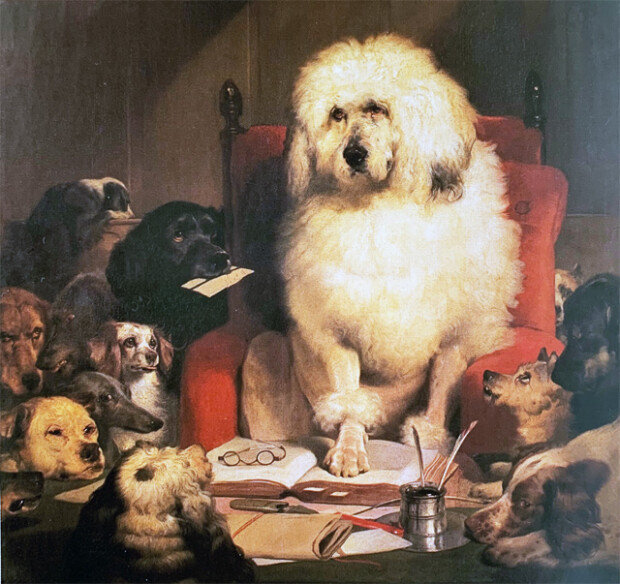A poodle that defeated Turner
A poodle that defeated Turner
Posted February. 20, 2020 08:17,
Updated February. 20, 2020 08:17

A group of dogs are gathered in a room with a desk. A white poodle sitting on a red armchair is surrounded by various types of dogs. It is gazing into the distance with a leg on an open book, which is reminiscent of a person lost in reverie.
Sir Edwin Henry Landseer, who drew the painting “Trial by Jury,” was talented enough to display his paintings at the Royal Academy of Arts at the age of 13. He was selected as a member of the academy when he was 24 and became a professor five years later. His success came earlier than Joseph Mallord William Turner, who became a member at the age of 24 and a professor eight years later. But Landseer’s painting disgraced Turner who was enjoying the best reputations as a scenery painter.
More than 1,200 paintings were submitted to the exhibition of the academy in 1840, but paintings of Turner and Landseer garnered the most attention. Turner was 65 at the time and Landseer was 38. Critics were divided into two directions. Four paintings of Turner included “Slave Ship,” which depicted slaves thrown overboard because of money in the middle of a stormy sea. Critics vilified him as a lunatic or a dotard as his painting had an uncomfortable theme and blurry strokes. But they praised Landseer’s painting as a “masterpiece that brilliantly depicted faces of dogs,” saying everything including the technique, idea, colors, composition and details was perfect. Queen Victoria especially loved it as she was a dog lover. Landseer became her favorite painter and received a knighthood 10 years later.
In fact, “Trial by Jury” is not just an animal portrait. It is a sarcasm on the legal sector of the U.K. The poodle on the red chair symbolizes Henry Brougham, then the high chancellor. He was a liberal politician who played a prominent role in passing the Slavery Abolition Act and revising electoral laws, but always had many opponents. Landseer expressed how important and hard it is to pass a bill through personification in a witty way.







